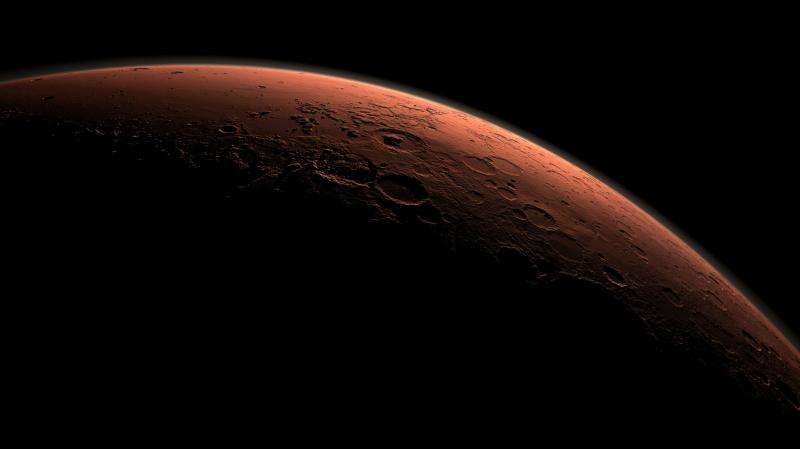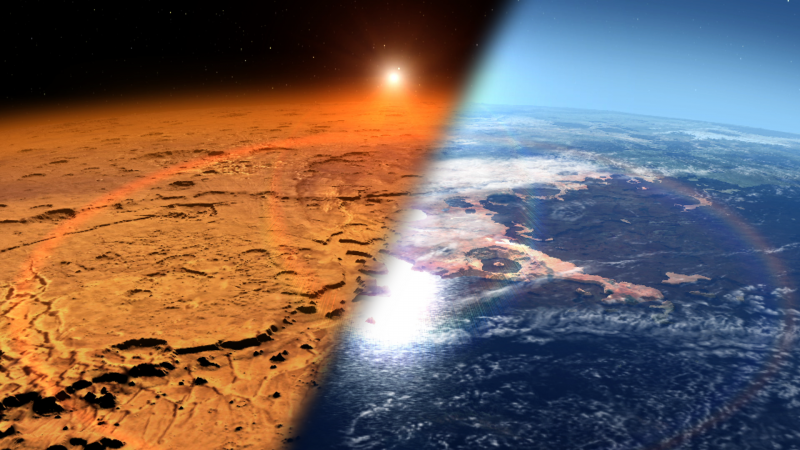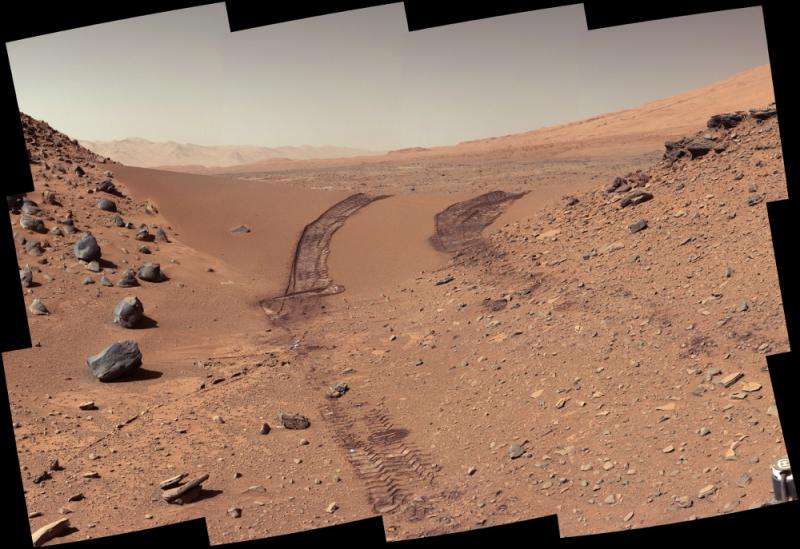Earth and Mars could share a life history

While life is everywhere on Earth, there is much debate about how it began. Some believe it originated naturally from the chemistry found on our planet as it evolved. Others hypothesize that life—or at least the building blocks of it like DNA—crashed onto our planet from such extraterrestrial bodies as comets.
Because Earth is the only place that we know has life, uncovering its origins is a considerable challenge. That said, scientists have not ruled out the other locations in the Solar System. There are several icy moons that could have oceans with microbial life inside, such as Europa (at Jupiter) or Enceladus (at Saturn). And much closer to us is an entire planet with a history of water—Mars.
"When Mars and the Earth started out as planets, they had very similar environments," said Nathalie Cabrol, a senior research scientist at the SETI Institute, a nonprofit research organization dedicated to the search for extraterrestrial intelligence. "But as they were being formed, the celestial mechanics were such that the two planets were bombarded with meteors, asteroids, and comets and exchanging a lot of material. The transfer between Mars to Earth is actually easier and faster than the other way around."
This could mean that finding microbial life—or fossilized microbial life—on Mars could shed clues as to how life came to be on Earth, she added. Cabrol delivered a talk on the topic at a TED Conference in Vancouver, Canada in March 2015. It was called, "How Mars might hold the secret to the origin of life."
'Intense geology'
In the 1800s, an Italian astronomer called Giovanni Schiaparelli published work suggesting that canali—the Italian word for "channels"—were visible from telescopes pointed at Mars.
Astronomers such as Percival Lowell misread the word for "canals," a non-natural structure that would need to be created by Martians. This inspired several generations of science fiction tales of Martians, even after observations with better telescopes showed the channels were an optical illusion.

When NASA visited Mars with spacecraft in the 1960s, the first pictures beamed back were disappointing, showing a lunar-like surface with craters. But with more observations, better information arose.
Mariner 9 in 1971 showed ancient volcanoes and (much smaller) channels. And when rovers explored the surface in the 2000s and beyond, more evidence of water emerged, such as minerals formed or altered by liquid water. This gives some astrobiologists hope that microbes could have survived on Mars' surface, at least in the past.
On Mars, we are fortunate to have more of an ancient record than on Earth, Cabrol pointed out. On our own planet, plate tectonics and erosion—"intense geology," as she termed it—have erased any sign of life earlier than four billion years old.
"If we want to find physical evidence on how prebiotic chemistry transitions to life, there is zero chance of finding a physical sample on Earth. They are gone," she said.
But Mars' cratered surface only disrupted by wind presents a much better chance, she added.

Future explorers
Many astronomers are also focused on finding life far beyond Earth in exoplanets discovered by NASA's Kepler space telescope. The development of telescopes that can detect life-friendly gases are probably decades away, but in the meantime our solar system is accessible, Cabrol argued.
"It's a miniature lab of what is out there in the Universe," she said.
Our solar system provides "pathways" to how microbial life could evolve, whether it dead ends or results in intelligent life forms, and what factors could lead to either of those scenarios (or others, as the case may be.)
While life may also be possible on icy moons, in the near term Mars is probably our best chance of finding life that is similar to Earth. That's because the material that created Earth and Mars likely did not exchange material as frequently with the Outer Solar System.
Right now, NASA has two rovers on the surface that are designed to learn more about ancient environments. Both the Opportunity and Curiosity rovers have found ample evidence of water. In a few years, the Mars 2020 rover is expected to land on the Red Planet to learn more about habitability.
Source: Astrobio.net
This story is republished courtesy of NASA's Astrobiology Magazine. Explore the Earth and beyond at www.astrobio.net .





















